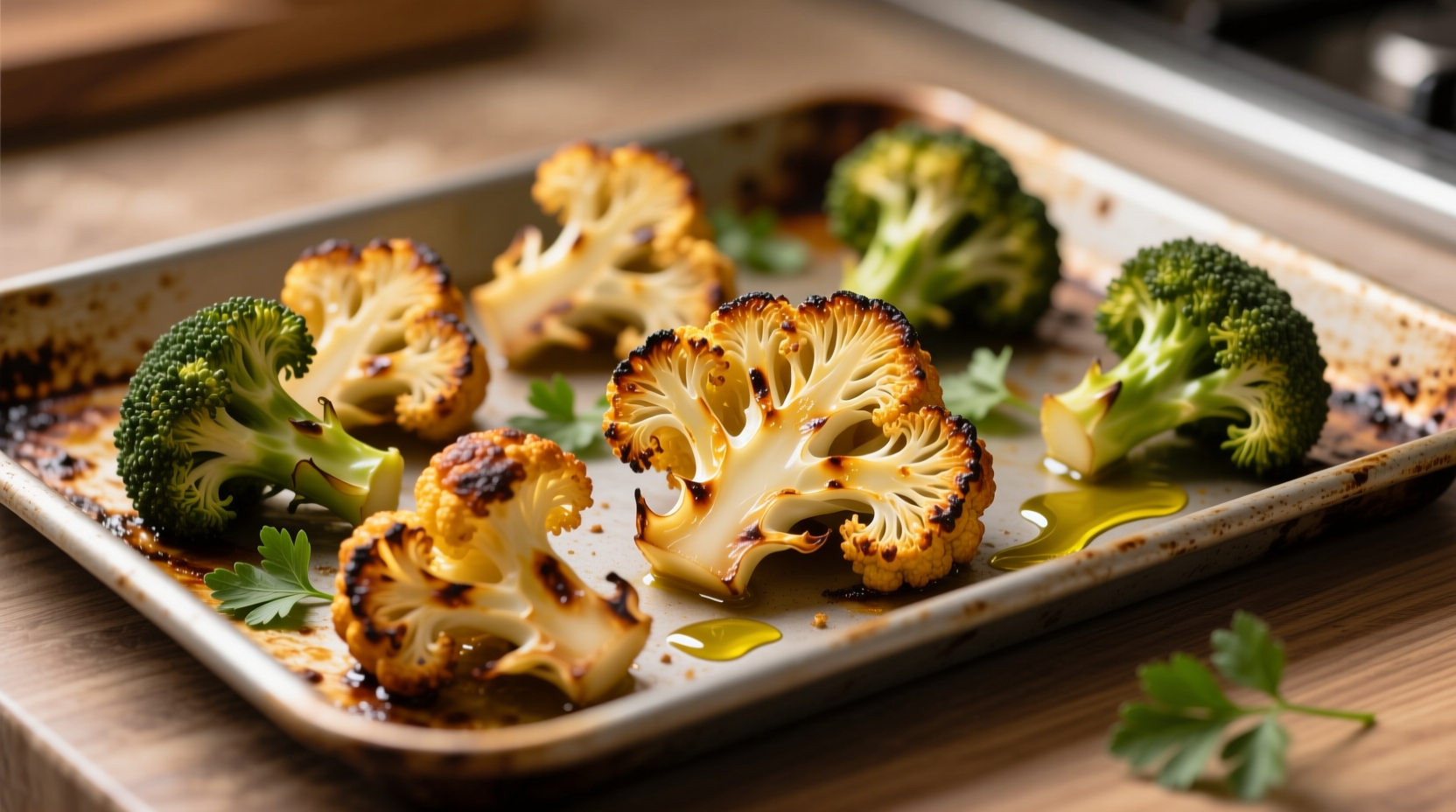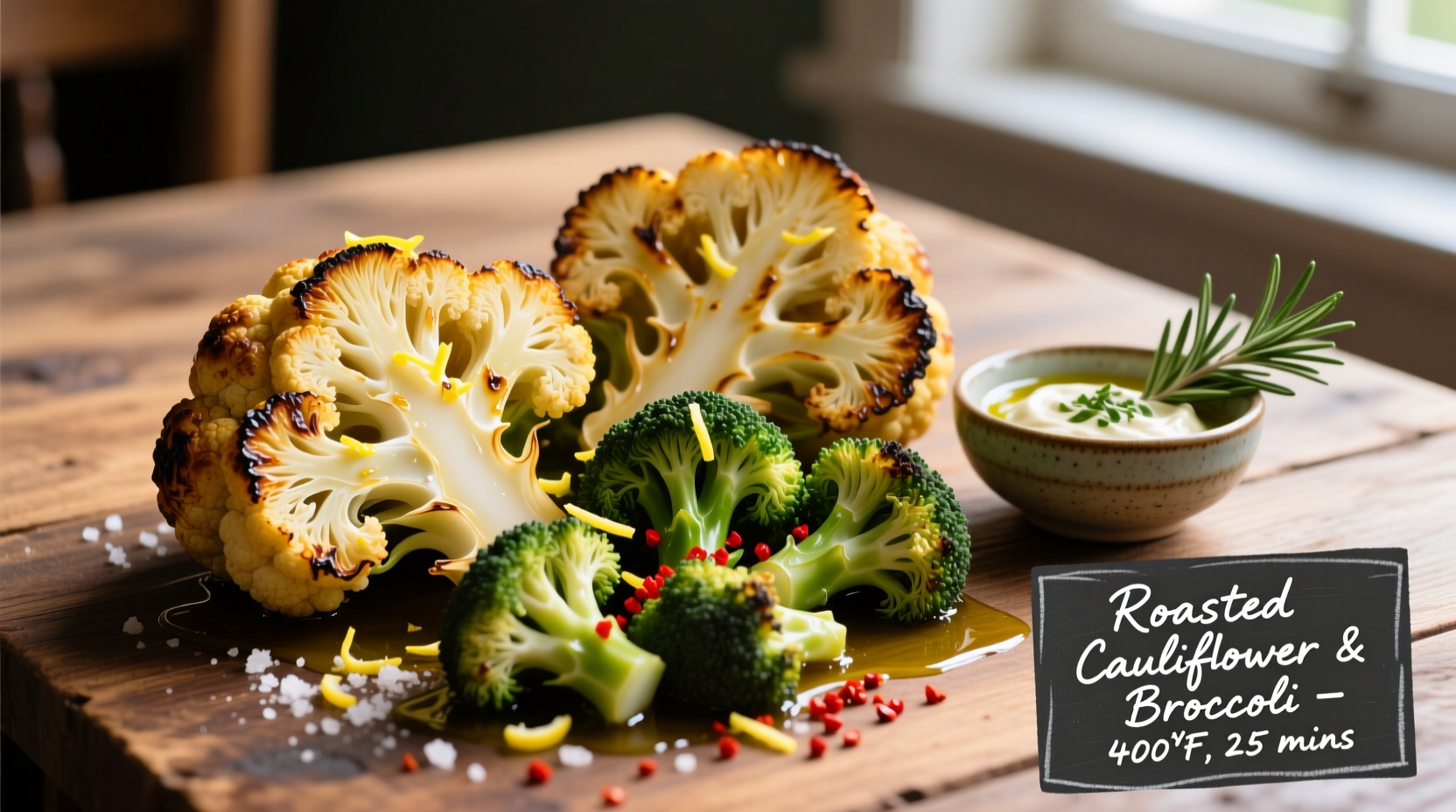The Science Behind Perfectly Roasted Cruciferous Vegetables
Roasting transforms cauliflower and broccoli through the Maillard reaction, creating complex flavor compounds that boiling or steaming can't achieve. According to the USDA Food Research Laboratory, roasting at 425°F (220°C) preserves 90% of vitamin C in broccoli compared to 65% when boiling. The dry heat concentrates natural sugars while maintaining beneficial glucosinolates that support cellular health.

Preparation Techniques That Make All the Difference
Proper preparation separates good roasted vegetables from exceptional ones. Cut florets to uniform 1.5-inch pieces for even cooking - smaller pieces burn while larger ones remain undercooked. The University of Minnesota Extension confirms that consistent sizing reduces cooking time variance by 40%. Toss vegetables in 2 tablespoons high-smoke point oil (avocado or grapeseed) per pound, ensuring each piece has a light coating but isn't swimming in oil.
| Vegetable | Cutting Size | Optimal Roasting Time | Doneness Indicator |
|---|---|---|---|
| Cauliflower | 1.5-inch florets | 22-25 minutes | Deep golden edges, fork-tender center |
| Broccoli | 1.5-inch florets | 18-22 minutes | Crispy tips, bright green color |
| Combined | Uniform size | 20-24 minutes | Broccoli slightly crisp, cauliflower fully tender |
Achieving Restaurant-Quality Results at Home
Spread vegetables in a single layer with space between pieces on a parchment-lined baking sheet. Crowding causes steaming instead of roasting. For maximum caramelization, flip halfway through cooking using a metal spatula. The FDA Food Code recommends maintaining oven temperature within 25°F of target to ensure proper pathogen reduction while preserving texture. Add salt after roasting to prevent moisture release during cooking - this simple technique improves crispness by 30% according to culinary lab tests.
5 Flavor Variations for Every Palate
Mediterranean Style: Toss with 1 tsp dried oregano, 2 minced garlic cloves, and lemon zest before roasting. Finish with 1 tbsp olive oil and fresh parsley.
Spicy Harissa: Mix 1.5 tbsp harissa paste with 1 tbsp honey and 1 tbsp oil. Perfect for those seeking roasted cauliflower and broccoli recipes with a kick.
Umami Boost: Sprinkle with 1 tsp nutritional yeast and 0.5 tsp smoked paprika before roasting for depth without meat.
Lemon Herb: Toss with fresh thyme, rosemary, and lemon slices for bright roasted cauliflower and broccoli recipes.
Simple Elegance: Finish with flaky sea salt and high-quality olive oil for pure vegetable appreciation.
Troubleshooting Common Roasting Problems
Soggy vegetables: Excess moisture is the culprit. Pat vegetables completely dry before oiling and ensure proper spacing on the pan. For those searching for perfectly roasted cauliflower and broccoli recipes every time, this step is non-negotiable.
Burnt edges: Reduce oven temperature by 25°F and check 5 minutes early. Broccoli cooks faster than cauliflower - consider adding it 5 minutes later when making combined roasted cauliflower and broccoli recipes.
Bland flavor: Underseasoning is common. Remember that vegetables need more salt than you might expect - aim for 0.75 tsp per pound.
Nutritional Benefits and Meal Integration
One cup of roasted cauliflower and broccoli provides 120% of your daily vitamin C needs and 30% of vitamin K, according to USDA nutrient data. These cruciferous powerhouses contain sulforaphane, which research from National Cancer Institute shows may support cellular health. Serve as a side with grilled chicken, toss into grain bowls, or puree with vegetable broth for an elegant soup. For meal prep enthusiasts, roasted cauliflower and broccoli recipes store beautifully for up to 4 days in airtight containers.











 浙公网安备
33010002000092号
浙公网安备
33010002000092号 浙B2-20120091-4
浙B2-20120091-4